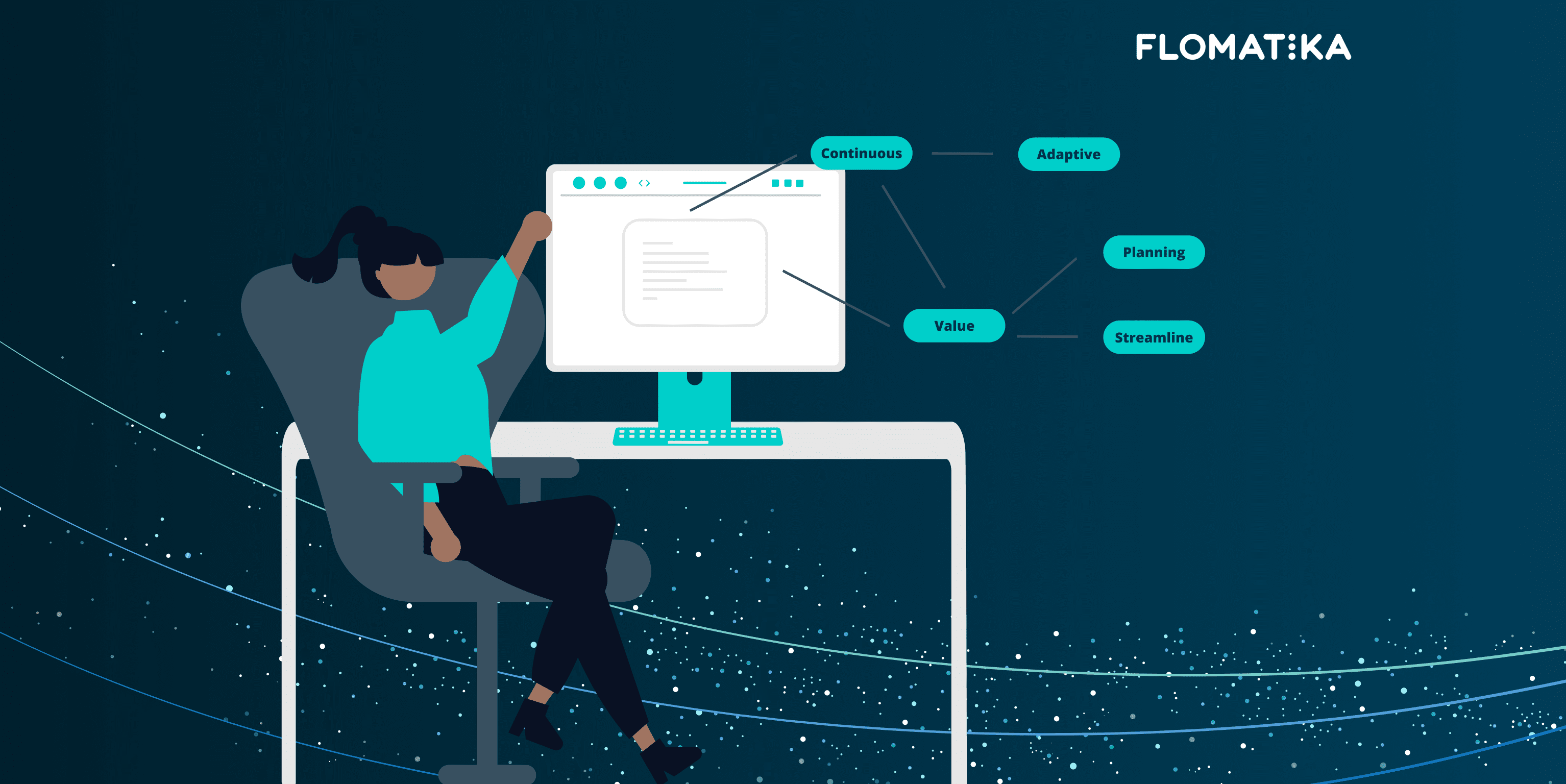Objectives: Linking Strategy to Execution

Are you ready to optimise your delivery ecosystem today?
book demoOn my LinkedIn feed, every other article that talks about the success or failure of initiatives, shares the common narrative that more often than not successful initiatives have clear business goals, a strategy in place to achieve them, and a well-tracked execution of its delivery. Many initiatives fail because strategy was not connected to delivery. If you are wondering what I mean by ‘Initiatives’? Well, at Flomatika we refer it to anything that has a time-box with a scope of work to be delivered.
Eg:
- quarterly plan
- project
- sprint
If you have been a part of any such initiative(s), there might have been moments when you felt the loss of visibility. Delivery teams, in their frantic day to day, may find themselves losing sight of business goals. Their focus is on moving work items to completion, that they may find themselves lacking awareness of if the work they are doing is directly contributing to the accomplishment of those missions. Hence , alignment with the business goals is important for delivery teams to ensure they are putting their efforts in the right place. A key thing that helps teams do that is visibility, more accurately real-time visibility of their work items which are directly mapped to the key results of business goals.
Our Product Manager, Tom Lim says from experience,
“When trade-offs need to be made, it’s helpful to be reminded of what the business goals are to ensure alignment.”
Genesis of the Governance Obeya
Our Product Manager Tom Lim shares an anecdote that sparked the idea of Governance Obeya.
We at Flomatika, came across this story of an enterprise that had adopted quarterly planning. The teams had committed to about 200 user stories for the quarter. At the end of the quarter, they only completed 80. Less than half! They were questioning why they only knew this after the fact, when the quarter had ended? Why were there no earlier signs during the quarter that they were at risk of not delivering the committed scope?
The following quarter the teams all committed to a similar number of users stories. At the end of the quarter, the same result occurred! The teams had delivered less than half of the committed stories. It took them 2 quarters - 6 months - to learn they had a systemic problem. This was the genesis of why we came up with the Governance Obeya, to ensure there is real time visibility on how initiatives are progressing.
A popular trend we are witnessing is the adoption of quarterly cadence and using events such as Big Room Planning as a way to map strategy to delivery, align over common concerns and track delivery. Regardless of what method you use, the success of delivery relies heavily on the answer to the question, “how are we progressing towards achieving our business goals?” Most of the time the answer is backed by intuitions and gut feeling as the information is scattered over different places and different minds. Lack of visibility to some real information creates more room for misinformed decisions.
How is our progress towards the goal?
Our flagship feature Governance Obeya addresses the problem around lack of visibility (know more about it from our blog). Each widget on the Obeya represents a concern you might have. The Objectives widget provides visibility on the progress of delivery towards business goals.
The goal-setting framework called Objectives and Key Results (OKRs) has been gaining popularity as it encourages organisations to define actionable goals and track measurable outcomes. Our widget is loosely structured around that concept, but you don’t need to be using OKRs yourself to take advantage.
Flomatika has made available the ability to connect your Key Results directly to your work items so that progress of completion for each can be tracked in real-time. This has become a game-changer! It takes away the guesswork, and allows the relevant stakeholders to have visibility on progress for each Key Result.
The direct link to work in your work management system effectively frees up some of the manual reporting efforts and allows more time for analysis and gaining insights. Helps you better assess and answer the question “How is our progress towards the goal?”.
Obeya at Scale

OKRs can be defined at different levels across an Enterprise, so we have accommodated this by allowing you to create multiple obeya’s at various levels. Enabling you to keep track of all aspects of the work relevant to you for your initiative from various levels.
For example:
- Enterprise: a company-wide OKR with an annual cycle
- Team of teams: Program objectives with quarterly cycle
- Project: tracking towards a specific release date
- Delivery team: tracking towards their sprint goal
Wherever you feel you want more visibility and want to strategically progress towards achieving business goals, create an Obeya for that. It is like looking through a telescope with a wide range of zoom, with the ability to zoom in to a specific team, or zoom out to the Program, Portfolio or Business unit level.
Let’s get into the details of how-to, shall we?
Suppose the business goals have been defined and laid out for your organisation, this could be something like “New Hero Feature”.

To kickstart delivery, record this goal as Objective in the Obeya. Next, it would be ideal to break it down to meaningful, actionable and measurable key outcomes and record them as Key Results.

In order to maintain the link between business goals and delivery you can directly connect the Key Result to a work item that represents it. Flomatika will present a progress bar showing how much of the work is completed and how much is in process by taking into account all its child items and you may also opt to include progress data of related work as well.

The progress bar of the widget helps you to monitor and analyse progress with real-time data, see how the work is tracking with respect to the Key Results that have to be accomplished. It gives an opportunity to rate the progress as on track, behind, or at risk based on your deep understanding of the work, team and circumstances.


Objective vs Subjective Analysis
This is how our Product Manager explains this concept.
In the Governance Obeya, we look to balance between objective analysis (what the data is telling us) versus the subjective analysis (what someone close to the work and teams knows more and can provide a perspective that the data doesn’t tell us). For example, the progress bar (objective analysis) might show that we are running behind where we expect to be at this point in time, but a Scrum-Master or Delivery Lead might be aware that they had tackled the really difficult items first, and now confident the remaining items will progress quickly now. So they may add a rating of ‘On Track’ to compliment what the progress bar is telling us (subjective analysis). We’re combining the two analysis together to provide hopefully a more holistic view.
Each widget in Governance Obeya serves with real-time updates towards a different concern of running an Initiative or more generally speaking a timeboxed project. The Objective widget focuses on just one - helping you track and analyse direct progress towards your business goals. There are other widgets, each with its own insightful view of scope of work including its burn-up burn-down view, risks, dependencies, predictive analysis and much more. Upcoming blogs give you an inside view of what they are all about. Stay tuned!











%20(1).jpg)
.jpg)
